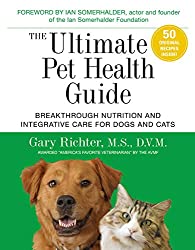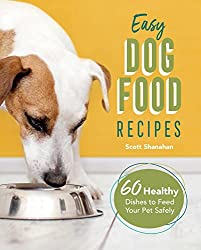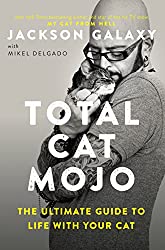Last Updated on March 31, 2023
As pet owners, we all want our furry friends to live long, healthy lives. One of the most important factors in achieving this goal is ensuring that they receive proper nutrition. Just like humans, pets require a balanced diet to maintain their overall health and well-being.
1. Understanding the Nutritional Needs of Different Types of Pets
Different types of pets have different nutritional needs, and it’s important to understand what your pet requires in terms of protein, fat, carbohydrates, and essential vitamins and minerals. Here’s a breakdown of some common household pets and their nutritional needs:
1a. Nutritional Needs of Dogs
Dogs are omnivores, which means they can eat both meat and plant-based foods. However, their diet should consist primarily of animal-based proteins. Dogs require a balance of protein, fat, and carbohydrates, as well as essential vitamins and minerals.
When choosing dog food, look for high-quality food that meets the nutritional requirements for your dog’s breed, size, and age. Read the ingredients list and avoid foods that contain fillers, by-products, and artificial preservatives.
Feeding schedules for dogs can vary depending on their age and size. Puppies require more frequent feedings than adult dogs, while older dogs may require smaller, more frequent meals. Be sure to consult with your veterinarian to determine the best feeding schedule for your dog.
1b. Nutritional Needs of Cats
Cats are obligate carnivores, which means they require a diet that consists primarily of animal-based proteins. They require a balance of protein, fat, and essential vitamins and minerals.
When choosing cat food, look for high-quality food that meets the nutritional requirements for your cat’s age and size. Avoid foods that contain fillers, by-products, and artificial preservatives.
Feeding schedules for cats can vary depending on their age and activity level. Kittens require more frequent feedings than adult cats, while older cats may require smaller, more frequent meals. Consult with your veterinarian to determine the best feeding schedule for your cat.
1c. Nutritional Needs of Small Pets
Small pets, such as rabbits, guinea pigs, and hamsters, require a diet that is high in fiber and low in fat. They require a balance of hay, fresh vegetables, and a small amount of pelleted food.
When choosing food for your small pet, look for high-quality food that meets their nutritional requirements. Avoid foods that contain seeds, nuts, and dried fruit, as these can be high in fat and sugar.
Feeding schedules for small pets can vary depending on their age and size. Consult with your veterinarian to determine the best feeding schedule for your small pet.
2. Tips for Choosing the Right Food for Your Pet
With so many different pet food brands and types available, it can be overwhelming to choose the right one for your pet. Here are some tips to help you make an informed decision:
2a. Read the Labels
The first step in choosing the right pet food is to read the labels. Look for a food that lists high-quality animal protein as the first ingredient. Avoid foods that contain fillers, by-products, and artificial preservatives.
When choosing food for your pet, be sure to read the labels carefully and choose high-quality foods that are appropriate for your pet’s needs. And remember, if you have any concerns or questions about your pet’s nutrition, consult with your veterinarian.
And one last thing, I would like to share a personal experience with you. A few months ago, I was browsing through the pet food aisle at my local store when I came across a brand that I had never seen before. I picked up the bag and started reading the label, but to my surprise, I couldn’t understand most of the ingredients listed.
After some research, I found out that the food contained a lot of fillers and by-products, and that it wasn’t a good choice for my dog. I decided to stick with the brand that I had been using, which I knew was high-quality and met all of my dog’s nutritional needs.
Remember, you know your pet best, and it’s up to you to make sure that they are getting the best possible nutrition.
2.a1 Which ingredients are considered as safe and good?
- Animal-based proteins: Look for whole meat sources such as chicken, beef, lamb, or fish. These are high-quality sources of protein and provide essential amino acids that your pet needs.
- Whole grains: Whole grains such as brown rice, oats, and barley provide a good source of energy and fiber for your pet. Avoid foods that contain corn, wheat, and soy, as these are often used as fillers and can be difficult for some pets to digest.
- Fruits and vegetables: Fruits and vegetables provide essential vitamins, minerals, and antioxidants. Look for foods that contain a variety of fruits and vegetables such as sweet potatoes, carrots, blueberries, and spinach.
- Natural preservatives: Look for foods that use natural preservatives such as tocopherols (vitamin E) or ascorbic acid (vitamin C), rather than artificial preservatives like BHA, BHT, or ethoxyquin.
- Probiotics: Probiotics are beneficial bacteria that can help support digestive health. Look for foods that contain probiotics such as Lactobacillus acidophilus or Bifidobacterium animals.
2.a2 Then which ingredients are considered “bad, low quality or unsafe”?
- By-products: These are low-quality protein sources that are often made from animal parts that are not suitable for human consumption, such as chicken feet, beaks, and organs.
- Fillers: These are ingredients that add bulk to the food, but provide little to no nutritional value. Examples include corn, wheat, and soy.
- Artificial preservatives: These are chemicals that are added to pet food to extend its shelf life, but can be harmful to your pet’s health. Examples include BHA, BHT, and ethoxyquin.
- Artificial colors and flavors: These are added to pet food to make it more appealing to pets and their owners, but can cause health problems in some pets.
2b. Consider Your Pet’s Age and Activity Level
Different life stages and activity levels require different nutritional needs. For example, a puppy or kitten will have different requirements than an adult dog or cat. An active pet will also require more calories than a less active one.
2c. Consult with Your Veterinarian
Your veterinarian is the best resource when it comes to determining the right food for your pet. They can take into account your pet’s age, breed, weight, and any health issues to recommend the best food and feeding schedule.
3. Feeding Schedules
It’s important to avoid overfeeding your pet, as this can lead to obesity and other health problems. Follow the feeding instructions on the food label and consult with your veterinarian to determine the appropriate amount of food for your pet’s age, weight, and activity level.
3a. Tips for Choosing the Right Food
Choosing the right food for your pet can be overwhelming, with so many options available on the market. Here are some tips to help you make an informed decision:
- READ the ingredients list: Look for high-quality, whole-food ingredients that are easily recognizable. Avoid foods that contain fillers, by-products, and artificial preservatives.
- Check for certifications: Look for foods that are certified by organizations such as the Association of American Feed Control Officials (AAFCO) or the National Animal Supplement Council (NASC). Those are USA-specific organizations, check for similar ones in your country.
- Consider your pet’s specific needs: Different pets have different nutritional needs. For example, if your pet has a food allergy or sensitivity, you may need to look for a food that is specifically formulated to address those issues.
- Avoid fad diets: Just like with human nutrition, many fad diets for pets may not be based on sound science. Stick with foods that have been proven to provide balanced nutrition for your pet’s species and life stage.
3b. Feeding Schedules for Different Types of Pets
Feeding schedules can vary depending on your pet’s species, age, and activity level. Here are some general guidelines for feeding schedules for different types of pets:
- Dogs: Adult dogs generally do well with one or two meals per day, depending on their size and activity level. Puppies require more frequent feedings, usually three to four times per day. However, consult with your veterinarian to determine the best feeding schedule for your dog.
- Cats: Cats generally do well with two to three small meals per day, depending on their age and activity level. Kittens require more frequent feedings, usually four to six times per day. Again, consult with your veterinarian to determine the best feeding schedule for your cat.
- Small Pets: Small pets such as rabbits, guinea pigs, and hamsters require a diet that is high in fiber and low in fat. They generally do well with small, frequent meals throughout the day. Consult with your veterinarian to determine the best feeding schedule for your small pet.
Final Thoughts
In conclusion, nutrition is a crucial aspect of your pet’s overall health and well-being. By choosing the right food and feeding schedule, you can help ensure that your pet gets the nutrients they need to thrive. Remember to consult with your veterinarian for personalized advice and to monitor your pet’s weight and overall health regularly. With a little bit of effort and attention, you can help your pet live a great and healthy life.
About Pet Parenting and Care Topic
Pet Parenting and Care is your go-to resource for all things related to caring for your furry friends. From nutrition and exercise to grooming and healthcare, our team of experts provides tips, advice, and strategies to help you become the best pet parent you can be. Whether you’re a seasoned pet owner or new to the game, we’ve got you covered with the latest information and trends in the pet care industry.
Join our community of pet lovers and gain access to our Pet Parenting and Care Resource Hub.
Sign up for free today!






















